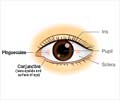Ultra-Violet Radiation - Glossary
1.Mosaic - An individual with two cell types or more, comprising of different chromosome number or structure
2.Genetic Counselling - A communicative procedure that undertakes to deal with the problems that rise in a family with the occurrence or the risk of occurrence of a genetic abnormality
b3.Pedigree - A pedigree involves recording a family's history and making use of a standard set of symbols to represent the status of each member of the family
4.Allele - An allele is an alternative form of a gene located on a given locus of a chromosome
5.Gene - Genes are located on the chromosomes and carry the information representing a protein
6.Chromosomes - Chromosomes are structures made up of DNA and proteins found in the cells of all organisms.The number of chromosomes is species- specific. In humans it is 46.
7.DNA - The DNA is the basic unit of heredity and is known as the blue print of life. It carries the genetic codes which stores the necessary information for all organisms.
8.Genotype - Genotype indicates the genetic constitution of an organism
9.Phenotype - Phenotype refers to the physical appearance of an organism which is controlled by the genotype and the enviornment
10.Haploid Cell - A cell having only one set of chromosomes, ie. 23 numbers in humans
11.Diploid Cell - Having two sets of chromosomes, 46 numbers in humans
12.Hybrid - An offspring of parents belonging to two different species, example mule which is the offspring of a horse and donkey
13.Mutation - An inheritable change in the gene or the chromosome
14.Wild Type - An organism having a normal phenotype
15.Mutant - An organism harboring a mutation
16.Trisomy - A condition, which arises due to the presence of an extra chromosome. An example is Down syndrome, where the individual has an extra chromosome 21
17.Mitosis - A division by which the cells reproduce, wherein the resultant cells are the replica of the parent cell.
18.Meiosis - A special kind of cell division, called reduction division, that takes place in the testes and the ovaries, which produces eggs and sperms that are haploid
19.Consanguinous marriage - A marriage between two closely related individuals
20.Euploidy - When an organism has the regular chromosome number, example 46 numbers in humans, it is euploid.
21.Aneuploidy - When an organism has an abnormal number of chromosomes as in Down Syndrome, it is known as aneuploidy.









